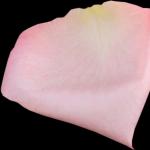The circulation pump is one of the main components of the heating system. Her task is forcefully move water along the circuit.
Some systems require installation two similar devices to get things going.
The need to install an additional circulation pump

The thought of installing a second device arises with uneven heating of the coolant. This is due to insufficient boiler power.
To detect the problem, measure the temperature of the water in the boiler and pipes. If the difference is 20°C or more, the system should be cleared of air pockets.
If the malfunction continues, install an additional circulation pump. The latter is also necessary if a second heating circuit is installed, especially in situations where the length of the piping is 80 or more meters.
Reference! Invite specialists to clarify calculations. If they are incorrect, installing an additional device will result in poor performance. In rare cases, nothing will change, but the purchase and placement costs will be wasted.
Second pump also not needed if the heating system is balanced with special valves. Clear the pipes of air, replenish the amount of water and carry out a test run. If the devices interact normally, then there is no need to install new equipment.
Hydraulic separator
Used when installation of an additional pump is required. The device is also called anuloid.

Photo 1. Hydraulic separator model SHE156-OC, power 156 kW, manufacturer - GTM, Poland.
Such devices are used in heating if water is heated using long-burning boilers. The devices in question support several heater operating modes, from ignition to fuel extinguishing. In each of them, it is advisable to maintain the required level, which is what the hydraulic gun does.
Installing a hydraulic separator in the piping creates a balance during the operation of the coolant. Anuloid is tube with 4 outgoing elements. His main tasks:
- independent air exhaust from heating;
- catching part of the sludge to protect pipes;
- filtration dirt getting into the harness.
Attention! You need to carefully select the characteristics. Choosing a quality device will help protect the system from problems. Because of this, installing a pump becomes mandatory.
Functionality
A connection with a circulation pump performs many tasks. They must be allowed regardless of the flow of working water and possible pressure surges in the pipes. Efficiency is difficult to achieve because the fluid is supplied internally from a common source.

Thus, the coolant leaving the boiler unbalances the system.
Because of this, a hydraulic separator is placed: its main purpose is to create denouement, which will solve the problem described above.
The following functions are also important:
- contour matching, if several are used;
- support calculated consumption in the primary piping, regardless of the secondary ones;
- permanent ensuring the operation of circulation pumps;
- relief operation branched systems;
- pipe cleaning from the air;
- catch sludge;
- convenience settings when using modules.
Where to put the second device in the house

- the shaft is positioned horizontally, parallel to the floor;
- water flow is directed in one direction with the arrow, installed on the device;
- the box is placed on any side except bottom, which protects the terminal from water ingress.
The device is mounted on the return line, where the coolant temperature is minimal.
This increases the service life, although some experts disagree with this phrase. The latter is related to the operating rules: the device must withstand the heating of the working fluid up to 100-110 °C.
Important! Placement is possible not only on the return pipe, but also on the straight pipe. The main thing is to install between the boiler and radiators, because the contrary is prohibited. This also makes the device easier to maintain.
You might also be interested in:
How to consistently integrate an auxiliary device into a heating system
To install the circulation pump use one-pipe or two-pipe system heating. Before starting, be sure to read the instructions included with the device. During preparation, water is removed from the piping, then the pipes are cleaned from dirt, corrosion and scale. The device is installed according to plan, filled with coolant and begins to operate.

It is preferable to install the pump on the return side using bypass. The latter helps to shut off the fluid flow if there is a need to replace parts or troubleshoot problems.
Consider the pipe diameter branch: it must be smaller than the main line.
Taps are placed on both sides of the bypass to protect against accidents. If necessary, they are blocked. Another one is installed on the central part of the harness. It helps direct the working fluid to the circulation pump. It is advisable to install a filter before entering, purifying water from impurities and solid salts.
Two pumps in a scheme with heated floors
Reference! If this technology is used, the pump must be installed horizontally, always after the feed mixer. Some systems use multiple devices, one for each floor.
When filling the piping with coolant, it is not always possible to remove all the air. The latter blocks the path of the liquid, and the descent cannot be carried out through any collector. The solution to the problem is a valve built into the circulation pump. To release gases, just turn it counterclockwise, supply water, then tighten the disc and turn on the device. If necessary, the procedure is repeated.
Installing an additional pump in the heating system is the best solution if there are problems with heating your home. Installing this device can help to evenly distribute the coolant in the radiators.
The circulation pump can be installed for heating boilers operating on a wide variety of fuels - processed oil, coal, gas, diesel fuel, firewood, electricity.
- 1. The overall efficiency of the heating system increases. This is reflected both in the uniform distribution of the coolant and in the temperature conditions in all rooms.
- 2. Indoor air heats up much faster.
- 3. The circulation of coolant inside the main line improves.
- 1. Collecting sludge particles (used as a dirt trap).
- 2. Automatic removal of accumulated air.
Show all
Main advantages
When deciding whether an additional pump is needed for a wall-mounted boiler or floor heating equipment, it should be noted that installing it provides many advantages. Main advantages:

 If you connect an additional pump to a double-circuit boiler, this will prevent the formation of an air lock in one of the lines where the coolant circulates. Most often, owners of apartments on the upper floors suffer from this.
If you connect an additional pump to a double-circuit boiler, this will prevent the formation of an air lock in one of the lines where the coolant circulates. Most often, owners of apartments on the upper floors suffer from this.
Important The advantage of the pump is also its efficiency. As practice has shown, simultaneously 2 devices (main and additional) consume less electricity.
In addition, if several pumps are running in the heating system, it becomes possible to install useful devices such as thermostats and heated towel rails. The owner of the house can also install pipes of a smaller cross-section - the quality of heating of the premises will not suffer from this. Another advantage is the low cost of this device.
An additional pump costs approximately 6-15 thousand rubles. These are not very high costs, considering that money can be collected for the unit from everyone living in the house.


Basic selection options
To correctly install a circulation pump in a heating system, you need to take into account a number of basic parameters. The main characteristics when choosing equipment are:

Taking into account the fact that pumps are not designed to lift liquid, but only to circulate coolant, the main attention when choosing equipment should be focused on the “Q” indicator.
If the house has 2 or more floors, the main condition for water rising to the top is not pressure, but the absence of air in the central pipeline and sufficient circulation, which can ensure the rise of the coolant.
To find out the required flow rate, you can use the following formula Q=N/(t2-t1), where:

Such calculations can only apply in cases where the boiler does not have a circulation pump. Today, boiler equipment is usually manufactured with a built-in pumping device. When purchasing a modern boiler, there is usually no need to select an additional pump.
But if the boiler has been in place for a long time, and the main heating line needed to be extended due to an additional extension, or the calculations were simply made incorrectly when purchasing a new boiler, then purchasing a second pump is a necessity.
Pump. Feed or return? Where to put it correctly. Answers on questions


Specifications
There is no need to choose a very expensive device. One way or another, the devices will not use their full potential. In addition, the installed equipment is characterized by strong noise. As a rule, the length of the pipeline determines the power indicator of the pumping device: for every 10 m of pipeline, the pump must create 0.5 m 3 of pressure.
As practice has shown, for a circuit of 100 meters it is enough if the pumping equipment produces a pressure of 5 m 3. When purchasing an additional device for pumping liquid, you must not forget that the pump’s performance must be 15% greater, in contrast to the originally calculated figure.


Types of equipment
For normal coolant circulation, it is advisable to choose “dry” or “wet” pumps. In the latter case, the rotor is located inside the coolant, that is, it pumps liquid, being located directly in it. During circulation, the water cools the electric motor. To connect electricity, a stator must be installed. Wet type pumps have a large number of advantages:

Among the disadvantages are the limited scope of application, not very high efficiency, it is not possible to use pumps for drinking water and other devices related to food.
In the design of “dry” pumps, the rotor is located outside the coolant. This equipment uses a seal designed to separate the electric motor and the pump itself. The approximate efficiency of the device is 80%, so such devices are used in cases where it is necessary to periodically pump a significant volume of water. These devices are most often used in industrial plants and large department stores.
Installing an additional pump.mp4
Preparatory activities
Before you begin installing the pump, you must carefully familiarize yourself with the stages of work. At the initial stage you need to prepare for installation. For this you will need to purchase a coarse filter and detachable threads. Before installing the pump, it is necessary to prepare a check valve, which will normalize the operation of the heating system. For installation you may also need:

It is necessary to first determine the installation location. Modern pumping equipment can be installed not only on the coolant supply pipeline, but also on the return pipe. If it has been decided to install the unit on a part of the pipeline between the forward and return pipes, then you need to make sure that the device is able to withstand strong pressure of hot water. We must also not forget that in houses where “warm floors” are installed in the premises, the injection device is installed in the hot coolant supply area. This way you can prevent air from entering the pipeline.
If an expansion tank is available, then a pump with a bypass is installed in the return pipe section, closer to the expander.
Hydraulic separator
If there is a need to install an additional pump, then another device must be included in this heating system - a hydraulic separator. In construction terminology, a hydraulic separator is also called a hydraulic separator or anuloid.
This equipment is recommended for use in heating systems where the heating medium is heated using long-burning boilers. It’s just that this heating equipment can operate in several modes (fuel ignition, combustion procedure and attenuation process), and each phase requires its own combustion mode.
Using a hydraulic arrow in a heating system will make it possible to create a certain balance in heating the system and generating heat.
The hydraulic separator itself is made in the form of a tube with four outlet pipes. To the main tasks of this device applies:
Anuloid is an important device in the heating system, therefore, if you have a pump, it must be installed.
Heating in a house is assigned a large number of functions that must be performed regardless of the flow of coolant with possible pressure drops in the main line. It is very difficult to achieve normal operation of the heating system, since water enters the pipe circuits from one heat source - the boiler, which ultimately leads to unbalanced heating. To prevent these situations, a hydraulic arrow is required, which serves as a decoupler.
Installation instructions


The installation of an additional pump does not depend in any way on the material and type of heating system. One way or another, the installation will need to be done using a bypass method. If there are metal pipes in the building, then it is possible to purchase a ready-made structure that allows you to bypass the main pipeline. Before installation, you need to completely drain the coolant and clean the pipe, for which the main line must be flushed several times. Then a piece of pipe is inserted, which is curved in the shape of the letter “P”.
The pump must be fixed in the center of the pipe. Ball valves are installed on both sides of the equipment. Why are they required? To begin with, the circulation of liquid is normalized by closing one of the taps. Also, if the pump is repaired, you will not need to completely drain the water; you can simply close both valves.
During installation, you need to pay attention to the direction in which the coolant moves. The direction is indicated directly on the pump with a special arrow. Upon completion of installation, the system is filled with liquid and checked for functionality. If any faults are identified, it is necessary to get rid of them at this stage of work.
Then, using the central screw, it is necessary to expel the stagnant air from the pipeline. If everything is done correctly, liquid will flow from the hole in the pipeline. To install manually operated equipment, the air must be removed from the pipeline before installation begins. For this purpose, the pump is turned on for 5 minutes, then the valves of the device open. This procedure must be performed several times. When the main line is filled with a sufficient volume of water, the pump will turn on independently. Moreover, the presence of air in the pipeline is strictly prohibited.
Connection features
When connecting the pump to the electrical network in heating systems with natural circulation, it is necessary to use an automatic fuse with a flag, which will simultaneously act as both a switch and a fuse. The automatic fuse must be installed at a distance of at least half a meter from boiler equipment and heating devices.


To connect a pump to a network with forced circulation, it is necessary to take into account that one is already located and begins to work if the thermal sensor is triggered. For synchronous operation of two devices, the additional one must also be connected to the heat sensor or to the main pump using a parallel connection.
In heating systems with an electric boiler, the pump can be connected to the boiler itself, then the circulation system will start working only when the coolant is heating.
Installing a pump in a heating system is a completely feasible task for any home craftsman. Careful study of all stages of installation will make it possible to make the heating system reliable and efficient. Taking into account all the features during this work, you can forget about the problem of uneven distribution of coolant and the appearance of air pockets in the system.
An additional pump in the heating system will be the best way out of a situation where home owners have problems heating their home. Installing the unit will help to evenly distribute heat in the pipeline. The great advantage of the pumps is their versatility, because they can operate not only on coal, but also on diesel fuel, fuel oil, gas, wood and electricity.
What are the advantages of an auxiliary pump?
The use of additional equipment to improve the operation of the heating system provides residents with many benefits. Firstly, the overall efficiency of the system increases. This affects not only the uniformity of heat distribution, but also the temperature in living spaces. Secondly, the air in the rooms warms up much faster. Thirdly, heat circulation inside the main pipeline is improved.
Another advantage of an additional pump is the elimination of the possibility of air accumulation in one of the channels through which heat circulates. Owners of apartments on the upper floors suffer most from this problem, however, if you install an additional unit, it will help create the necessary pressure and supply heat to the entire building. The big advantage of the pump can be confidently considered its efficiency. In practice, it has been proven that together two units (standard and additional) will consume less fuel.

In addition, if the building is provided with heat by a pair of pumps in the system, then residents can install useful devices such as towel dryers and thermostats. The inhabitants of such a building also have the opportunity to use small-diameter pipes - the quality of heating will not deteriorate as a result. Another important advantage is the low price of the equipment. An additional circulation pump can cost from 5 to 20 thousand rubles. This is not too much money, considering that money will be collected for the unit from all residents of the house.
What device parameters should be considered when purchasing?
Before purchasing and installing equipment, it is worth studying its most important parameters. In order not to make a mistake when choosing, familiarize yourself with such characteristics as coolant density, pressure force and water temperature. You will also need to know the diameter of the pipes used to heat the building.

You can find out exactly what characteristics the pump you have chosen has on the packaging, side wall or in the technical data sheet of the unit. Manufacturers designate pressure with the letter “H”. This indicator means the device’s ability to raise water to a certain height. It is measured in meters. The second characteristic is the fluid consumption of the system. It is designated by the letter "Q" and is measured in cubic meters. This parameter is equal to the boiler power and depends mainly on the diameter of the pipeline.
Circulation equipment is not designed to lift fluid. Because of this, when purchasing a unit, special attention should be paid to the “Q” parameter. If the installed boiler is not equipped with a pump, then further liquid consumption will have to be calculated independently. Most modern heating devices already have similar equipment. Installing 2 devices to improve heat circulation is optimal if the house already has a boiler of an older modification, but over time the building was completed and the heating structure increased.

There is no need to purchase very expensive equipment. In any case, the device will not be used to its full potential. In addition, the installed unit has a high noise level. Most often, the length of the pipe determines the power characteristics of the equipment: for every 10 m of pipe, the device must provide 0.5 m of pressure. In practice, a 100-meter ring will work effectively if the pump produces a pressure of 5 m. When buying a unit for a pipeline, do not forget that the power of the device should be 10% more than the figure calculated by the residents.
Types of additional pumps - choosing the appropriate unit
For efficient media circulation, it is best to use “wet” or “dry” pumps. In the first case, the rotor is located inside the coolant, that is, it pumps water while being directly in it. As the fluid circulates, it cools the engine. A stator is used to supply electricity. Wet pumps have many advantages. Firstly, they are able to last for a fairly long period of time. Secondly, such devices do not require frequent maintenance. Thirdly, they make less noise. And fourthly, they are not large in size.
Disadvantages include not very high efficiency, limited scope of use, and the inability to use pumps for drinking water and other food-related devices. Such units are used only in mansions and residential high-rise buildings.
In the design of dry-type pumps, the rotor is located outside the coolant. Such devices use a seal that is designed to separate the motor and the pump itself. The approximate efficiency of the equipment is 75%, which is why these units are used in situations where it is necessary to regularly pump large amounts of water. Such units are used more in manufacturing and shopping centers than in residential buildings.
Preparing to install equipment
Before you begin installing the pump, carefully read the operating algorithm. The first step is to prepare for installation. To do this, purchase split-type threads and a filter for deep cleaning. Also, before installing the equipment, you need to prepare a check valve. It stabilizes the operation of the heating system. To work you will also need:
- a set of keys;
- a set of large and small flat screwdrivers;
- pliers;
- a pipe whose diameter will be equal to the diameter of the riser;
- fittings

It is worth deciding in advance on the installation location. Modern units can be installed not only on the water supply pipe, but also on the return pipeline. If you plan to install the device on a section of pipe between the return and direct radiator-type wiring, then before doing so you will need to check the ability of the unit to withstand a powerful pressure of hot liquid. It is also worth remembering that in buildings where the premises are equipped with “warm floors”, the injection device is placed at the hot water supply point. In this way, it will be possible to eliminate airiness in the pipes.
If there is a membrane tank, then the pump with a bypass is mounted on the side of the return pipeline, closer to the expander.
Installation of the unit - algorithm in detail
The installation of an additional circulation pump in a standard heating system does not depend in any way on the type and material of the latter. In any case, installation will have to be done using the bypass method. If the house is equipped with a metal pipeline, then you can purchase a ready-made structure that allows you to bypass the main highway. Before installation, you will need to completely drain the liquid and clean the pipes. To do this, the pipeline must be flushed several times. After this, a piece of pipe bent in the shape of the letter “P” is installed on the side of the main pipe.

Fix the pump in the middle of the pipe. Place ball valves on both sides of the device. What are they needed for? First of all, the water circulation will return to normal if you turn off one of the taps. Secondly, in case of repair of the unit, you will have to drain the water; if there are taps, this will not be necessary. During installation, pay attention to the direction in which the liquid moves. It is marked on the pump body with a special arrow. Upon completion of installation, the system is filled with water and the operation is checked. If any problems are detected, they should be eliminated at this stage of the operation.
Next, using the central screw, we expel the stagnant air from the pipes. If everything is done correctly, water will begin to flow from a separate hole in the pipeline. To install a unit with manual control, the air must be removed from the pipes before installation begins. To do this, the device is turned on for a few minutes, after which the valves of the equipment open. This procedure should be repeated several times. As soon as the pipeline is filled with a sufficient amount of liquid, the pump itself will start. In this case, the presence of air in the pipes is strictly unacceptable.
Device connection technique – what to connect to what?
Residents of the house will not receive high-quality heating if the pump is not connected correctly. When connecting the device to the power supply network of natural circulation systems, an automatic fuse is used. To install the latter, you should choose a place at least 70 cm from the main boiler. In forced circulation systems, the pump will start working after the thermal relay is turned on. In order to ensure simultaneous operation of the built-in and additional pump, the second device will need to be connected to a relay or routed in parallel to the first device.
In electric-type boilers, circulation devices should be connected directly to the boiler. In this case, the pump will only operate when the liquid is heated. The cleaning filter must be installed in front of the pump housing. A valve screwed into the upper part of the bypass makes it possible to ventilate the pipeline, removing any air that has accumulated there.
An additional pump for the stove is one of the options for solving the problem of low cooling system performance on domestic cars.
Functioning normally under average operating conditions, it malfunctions at high or low ambient temperatures. In the first case, the engine overheats, in the second, the heater works poorly and is unable to provide an acceptable air temperature in the cabin.
In what cases should you consider installing an additional pump?
It is recommended to install an additional pump in the cooling system if:
- When the air temperature is above 28-30°C, the engine reaches a critically high temperature (provided that the cooling system is working properly);
- In cold weather, the heater blows cool air at idle speed at normal operating temperature of the engine.
Most often, the problems described above occur on the VAZ-2109, VAZ-2114, VAZ-2110, rear-wheel drive “classics”, all GAZ Volga models, except for the GAZ-31105. In the latter case, the malfunction may also occur under normal temperature conditions. This is due to the large volume of coolant in the system and an insufficiently powerful pump.
It is worth noting that there is no need to install an additional pump if the power unit overheats or the stove fails at temperatures that are normal for central Russia (-25 - 25°C). The corrected standard system operates successfully in this thermal mode. Therefore, if it malfunctions, you should look for a malfunction.
Unlike the standard VAZ and GAZ pump, which has a mechanical belt or chain drive, an electric pump is used as an additional driving force. Most often, motorists use an electric pump, which is standard equipment on the Gazelle car. 
The unit has high performance, but the quality of its manufacture leaves much to be desired. Therefore, before installing such a pump, it is recommended to disassemble it, coat all seals with automotive sealant, reassemble it and let it dry for 24 hours.
Note: the above applies to old-style pumps. New GAZ pumps have good build quality. However, over time, they also begin to leak.
An alternative to GAZ products is to install an additional pump manufactured by Bosh. These units have high build quality and a different operating principle. The blade rotates under the action of a magnetic coupling, and not an electric motor, as in the first case.
By using such a scheme, the manufacturer was able to abandon sealing connections and almost completely eliminate the possibility of leakage. The disadvantages of the imported unit include its high cost and relatively low productivity (700 liters versus 1200 liters per hour for the GAZ unit).
How to install an additional pump
Installation of an additional pump on a VAZ stove can be done in the engine compartment or under the interior panel. The first option is preferable, since in this case the sound of the pump does not enter the interior, and there is also no risk of flooding the interior with antifreeze if it leaks. Depending on the installation location, the unit can be mounted at the mounting location of the standard engine compartment sound insulation or on additional brackets. 
The installation of an additional water pump on the VAZ-2110 and other models of the domestic automobile industry is carried out on the heater supply pipe. In this way, it is possible to achieve a more active injection of coolant into the “furnace” radiator and increase heat transfer.
Note: increased pressure in the cooling system can lead to failure of poorly secured pipes or breakdown of the radiator. Therefore, before installing additional equipment, it is recommended to conduct a complete diagnostics of the CO.
Before installing an additional pump, the antifreeze is drained. After this, the pipe at the intended installation site is cut in half using a sharp blade, and the resulting ends are put on the pump outlets. It is important to ensure that the arrow drawn on one of the outlets, indicating the direction of fluid circulation, is directed towards the radiator. The pipes placed on the outlets are secured with clamps. It is better to use Norma brand screw clamps, since products from lesser-known brands often have sharp edges and cut the pipe.
The connection diagram to the on-board electrical network may vary depending on what goals the car owner sets for himself. If the pump is installed for more efficient cooling, it makes sense to connect it in such a way that it runs constantly when the ignition is on. The unit can be connected directly from the battery, but the circuit must be closed using a relay, which is activated after turning the start key. 
If you plan to install an additional pump in the heating system to improve the operation of the stove at XX, it is better to connect it through a button. In this case, the power circuit will include a relay, a fuse, a pump button and a battery. Electricity is supplied via a single-wire circuit. The “minus” in this case is the car body. Using this scheme, the car owner gets the opportunity to turn on the pump only when there is a need for it.
Note: it is better to install an additional pump using a second power supply connection scheme, since in extreme cold, its prolonged operation can lead to underheating of the motor and related malfunctions.
Expected results
After all the necessary elements have been installed and connected, road tests should be carried out, during which the pump must run continuously for at least an hour. During this, it is necessary to carefully inspect all its connections to the cooling system to eliminate leaks.
After the inspection, you should check the car while driving. It may happen that a unit functioning properly at idle speed will fail when the pressure in the pipes increases.
If everything was done correctly, the heater begins to supply warmer air, and the engine is effectively cooled even under heavy loads.
Not so long ago, when purchasing high-quality pumping equipment for an autonomous heating system in a private home was a huge problem, preference was universally given to schemes with natural coolant circulation. However, despite the apparent simplicity of this approach, such systems are not highly efficient and economical. In addition, the possibilities for accurately adjusting the temperature in individual rooms of the house are significantly limited, and with many modern heat exchange devices and systems, this type of organization of coolant transfer is not possible at all.
And the declared ease of installation of a scheme with natural circulation is also very conditional, since obligatory observance of the slope, a strictly specified arrangement of devices is required, and the pipes themselves must be of increased diameter. Sometimes, in the conditions of a particular building, compliance with all existing mandatory conditions to ensure normal circulation becomes a difficult or even impossible task. All of these problems can be solved by installing a pump in the heating system of a private home.
It is this block of questions that will be considered in this publication. It can be divided into several main subsections:
- Why do you need a circulation pump, and what are the benefits of installing it?
- How does a circulation pump work for a heating system?
- How to choose the optimal model?
- Where is the best place to install?
- How to carry out installation work yourself?
Prices for circulation pumps for heating
circulation pumps
Advantages of a heating system with forced circulation of coolant.
Ardent supporters of heating systems with natural coolant circulation cite a number of seemingly irrefutable arguments in favor of just such a scheme.
- The pump is an extra cost for purchase and installation.
- Any electrical equipment becomes an additional consumer of expensive electricity.
- The dependence of pumping equipment on the stability of the power supply makes the heating system extremely vulnerable in emergency situations in the power grid.
- The pump is an additional component of the system, vulnerable from the point of view of mechanical breakdowns.
It would seem, at first glance, that everything is fair. But if you look at each point impartially, the picture changes literally to the exact opposite.
Let's look at the diagram of a heating system with natural circulation:

Is such a scheme so easy to install and cheap? Not at all!
From the boiler (item 1), it is imperative to install an accelerating vertical section (item 2), from a large diameter pipe - preferably 1½ inches or even more. At the same time, it must reach the highest possible point - above any heat exchange devices. There, at the maximum height, you will have to install an open-type expansion tank (item 3).
The supply manifold (item 4) must be located with a mandatory slope of at least 5% (5 cm for each linear meter of the contour). In this case, again, the diameter of the pipe should not be less than 1¼ inches.
Vertical risers (item 5), through which the coolant is supplied directly to the heating radiators (item 6), are made of pipes with a diameter of at least ¾ inches.
Finally, the requirements for the diameter and compliance with the slope of the “return” collector (item 7) are the same as for the supply pipe. It turns out that in any case the boiler should be located below the lowest radiators.
In a small building with compactly located rooms, this approach is still feasible, and even then not always. Large diameter pipes are not only much more expensive, but also more difficult to install. They are extremely difficult and often impossible to hide without spoiling the interior. The possibility of hidden bottom connections of radiators is almost completely eliminated. The cost of the pump itself and its installation (which can be done independently) is simply not comparable with the costs listed above.

Even with the most thoughtful, optimal placement of all elements of a natural circulation circuit, it is unlikely to realistically create excess pressure in it only due to temperature changes and differences in density above 0.6 atmospheres. But such a pressure will clearly not be enough for many modern heating devices. Moreover, you don’t even have to harbor plans to create a water floor heating system.
Moreover, even a minor blockage, somewhere on the bends of pipes or in another area vulnerable to this phenomenon, can completely paralyze the movement of coolant through the pipes. And this will be all the more likely if the system is sufficiently branched, since hydraulic resistance will also have its say.
In order for a system with natural circulation to reach its design capacity, a powerful starting energy “impulse” is required. These are extra energy costs, and quite considerable ones at that. Well, even a short-term shutdown of the boiler for one reason or another will require some effort and a lot of time to bring the heating system back to normal operation. The low speed of the coolant and the consumption of part of the energy generated by the boiler only for its movement is a general decrease in the efficiency of the entire system. And, believe me, these extra energy costs will certainly exceed the total consumption of a compact circulation pump operating with a constant load.

Low circulation speed also means clearly uneven heating of heat exchange devices installed in such a circuit and distributed throughout the rooms. Adjusting the level of heat transfer from radiators installed in the premises of a house becomes possible solely on a quantitative basis, that is, by changing the volume of liquid passing through the devices. This method is not accurate, and in conditions of low pressure in the pipes it can even lead to blocking of a particular radiator or section of the circuit. To talk about high-quality regulation in such conditions, that is, with the addition of coolant from the return, is generally naive.
You might be interested in information about how it is produced
The result is the same - the inefficiency of the system directly negatively affects the efficiency of energy consumption, that is, it leads to unnecessary costs during the entire period of heating operation. It’s more profitable to spend money on a pump once...
Finally, a few words about the vulnerability of pumping equipment to the presence of power supply.
This is true, but all electrical appliances in the house are dependent in exactly the same way. Including most modern heating boilers equipped with automation. The problem can be solved - it is enough to install an uninterruptible power supply for the boiler equipment.

With low pump power consumption, even a not-so-expensive and powerful UPS can keep the equipment running for several hours. This is quite enough.
And, finally, nothing prevents you from installing the pump so that in emergency cases it remains possible to switch to natural circulation in the system. This is what they usually do - the pump piping circuit includes a bypass (jumper) and several valves (an automatic valve can also be used).

Well, about the fact that the pump becomes another vulnerable link in the system. You can reassure the reader: statistics show that failure of circulation pumps relates more to casuistic situations, they are so rare. The designs of devices from leading manufacturers are distinguished by excellent reliability and can last for decades, unless, of course, operating rules are violated. And the resulting benefit in the form of economical operation of the system justifies the purchase of even an expensive pump within two to three years. So from this side there is the least amount of “expecting a catch”.
We hope that the reader is convinced of the need to install a circulation pump. So, it's time to consider how to choose it correctly.
How to choose the optimal circulation pump
Two main types of circulation pumps
Circulation pumps are devices powered by electricity. But direct contact of the electrical part with the hydraulic part is unacceptable. This division is ensured by two approaches to the arrangement of devices, which predetermines their division into “dry” and “wet” type devices. Much becomes clear from the title.
- Dry rotor pumps appeared earlier than their counterparts. Their basic design is such that the electric drive is completely isolated from the pump part, and rotation is transmitted to the impeller through the shaft. Even externally, such pumps can be distinguished by their elongated body, due to the remote electric motor unit. As a rule, such devices are quite massive, so their console installation is most often practiced - for this purpose, brackets or mounting platforms are provided on the body.

Dry-type circulation pumps are powerful and efficient devices that provide both a very high flow rate of coolant passing through them and high pressure levels in the system. It's hard to do without them. If you are designing a powerful boiler room, for example, for a large mansion with several floors. But in the conditions of a medium-sized apartment or private house, their use already seems excessive, especially since they have certain disadvantages.
— The difficulties associated with the size, massiveness and installation features have already been mentioned.
— The shaft transmitting rotation has a complex system of seals that prevent leakage of liquid under pressure. These seals gradually wear out, which predetermines the need for regular preventative maintenance, including replacement with new ones.
— The operation of such pumps is always accompanied by a noise effect due to the need for air cooling of the electric drive. This also imposes restrictions on the choice of installation location for the device.
You might be interested in information about what it should be like
In a word, if the heating system does not require specifically high pressure and coolant flow rates, the best option would still be to purchase a pump with a “wet rotor”.
- Pumps with a “wet rotor” are designed differently. The circuit diagram is shown in the illustration below:

The housing of the power unit (item 1) is hermetically connected, due to ring gaskets, to the body of the pumping working chamber (item 2) using several screws (item 3). On both sides of the “snail” working chamber there are certain fastenings for cutting into pipes - these can be threaded pipes (item 4) for a coupling connection or flanges.
Inside the power block there is a stator winding (item 5) - this is the only compartment that does not come into contact with the liquid medium - it is hermetically separated from all the others by a stainless steel “glass” (item 6). Thus, the seals are placed exclusively on static parts, that is, they do not wear out from friction.
Inside there is a rotor (pos. 7), onto the shaft of which the pump impeller (pos. 8) is rigidly mounted. The rotor rests on bearings, which receive constant lubrication from the coolant. The liquid medium that fills the entire internal space of the pump is also an excellent heat remover, and the device is not in danger of overheating and does not require an additional engine cooling system. To ensure that the entire volume of the pump is completely filled with coolant, a special plug (item 9) is provided for releasing air.
Rotation of the pump rotor in a liquid medium certainly entails certain energy losses, that is, a decrease in the efficiency of the device. But against the backdrop of low electricity consumption, this factor does not seem worthy of special attention - due to the insignificance of losses.
The operation of the pump is almost silent, the device is compact and easy to install - it simply cuts into the desired section of the pipe, without requiring any additional fasteners. True, in this case an important condition must be met - the rotor axis, regardless of the position of the housing, must take a horizontal position. In this position, the bearings will never be dry, and they are not in danger of failure due to overheating.
One more detail - do not allow solid suspensions, which may well form in the system circuits, to get into the bearings. Therefore, it is always recommended to install a mechanical cleaning filter – a “dirt filter” – directly in front of the pump.
You might be interested in information about how reliable it is for heating systems
Criteria for evaluating a circulation pump when choosing
When choosing a circulation pump for installation in an existing heating system, it is necessary to take into account a number of criteria.
- Supply voltage. On the scale of autonomous heating systems for apartments and private houses, pumps with single-phase power supply 220 V 50 Hz are used. Low current consumption eliminates the need to lay any dedicated power lines - network sockets are sufficient. The only thing that is advisable to provide is uninterrupted power supply, which was mentioned above.
- Power consumption. Naturally, the lower it is (while maintaining other performance characteristics), the more economical the device is. The optimal choice would be a device of energy consumption class “A”, even if it costs more. The lower the class (“B”, “C” and so on), the greater the energy consumption.

Most modern pumps have the ability to select one of two or three operating modes, with different indicators of the generated pressure. In accordance with this, the power consumption also changes. Typically, the indicators are displayed on the device nameplate, in the form of a plate.

Since we have touched upon the issues of purely operational characteristics that affect the operation of the heating system - productivity and the pressure created, it makes sense to consider these indicators in more detail.
There are tables that can be used to approximately determine the required parameters - one of them is located below.
| Total area of premises | Required thermal power (kW) at the difference in coolant temperatures in the supply and return pipes (Δt) | Pump parameters, min (without taking into account the hydraulic resistance of the circuits and their branching) | |||
|---|---|---|---|---|---|
| Δt= 20 °С | Δt= 15 °С | Δt= 10 °С | Productivity (m³/hour) | Pressure (m water column) | |
| up to 200 | 28,0 | 21,0 | 14,0 | 1,25 | 1,0 |
| 350 | 46,0 | 35,0 | 23,0 | 2,0 | 2,0 |
| 500 | 70,0 | 52,0 | 35,0 | 3,0 | 2,0 |
| 900 | 116,0 | 87,0 | 58,0 | 5,0 | 3,0 |
| 1100 | 140,0 | 105,0 | 70,0 | 7,0 | 3,0 |
| Δt= 20 °C - optimal mode for heating radiators | |||||
| Δt= 15 °C - optimal mode for heating convectors | |||||
| Δt= 10 °C - optimal mode for “warm floor” circuits | |||||
However, it is not always possible to rely on such tabular values, since they are usually designed for “ideal” operating conditions and do not take into account many factors. It won’t be difficult to determine the required values yourself.
- Pump performance. The main task of this device is to move a certain amount of coolant along the circuit, that is, ultimately, the required amount of thermal energy sufficient for the efficient operation of heat exchange devices (radiators, converters, “warm floor” circuits).
The calculation requires the following values:
W – the required thermal power (expressed in watts) of the heating system, ensuring a comfortable indoor temperature under the most unfavorable weather conditions.
The owners should know the power value. If not, then it can also be calculated for each room separately, and then summed up.
How to independently calculate the required thermal power of a heating system?
There is a clear and fairly accurate algorithm for performing such calculations. On our portal it is implemented in a special calculator, which you will find in the article
Δ t – the temperature difference in the “supply” and “return” pipes of the heating circuit at the entrance to and exit from the boiler. Optimal values for different types of heat exchange devices are shown in the table above.
WITH– heat capacity of the coolant, expressed in W × h / (kg × °C). For water it is 1.16. If a different coolant is used, this parameter must be indicated on its packaging. Happens. That this value is shown by the manufacturer in other units - kJ / (kg × °C). It’s easy to translate - the correction factor is 0.28. That is, 1 kJ = 0.28 Wh.
Formula for calculating the required performance ( G) is like this:
G=W/(Δt × C)
This formula gives a performance indicator expressed in kilograms per hour. All that remains is to convert this value into a volumetric expression, taking into account the density.
We suggest using a calculator for calculating pump performance - it will quickly and accurately lead to the desired result.



















